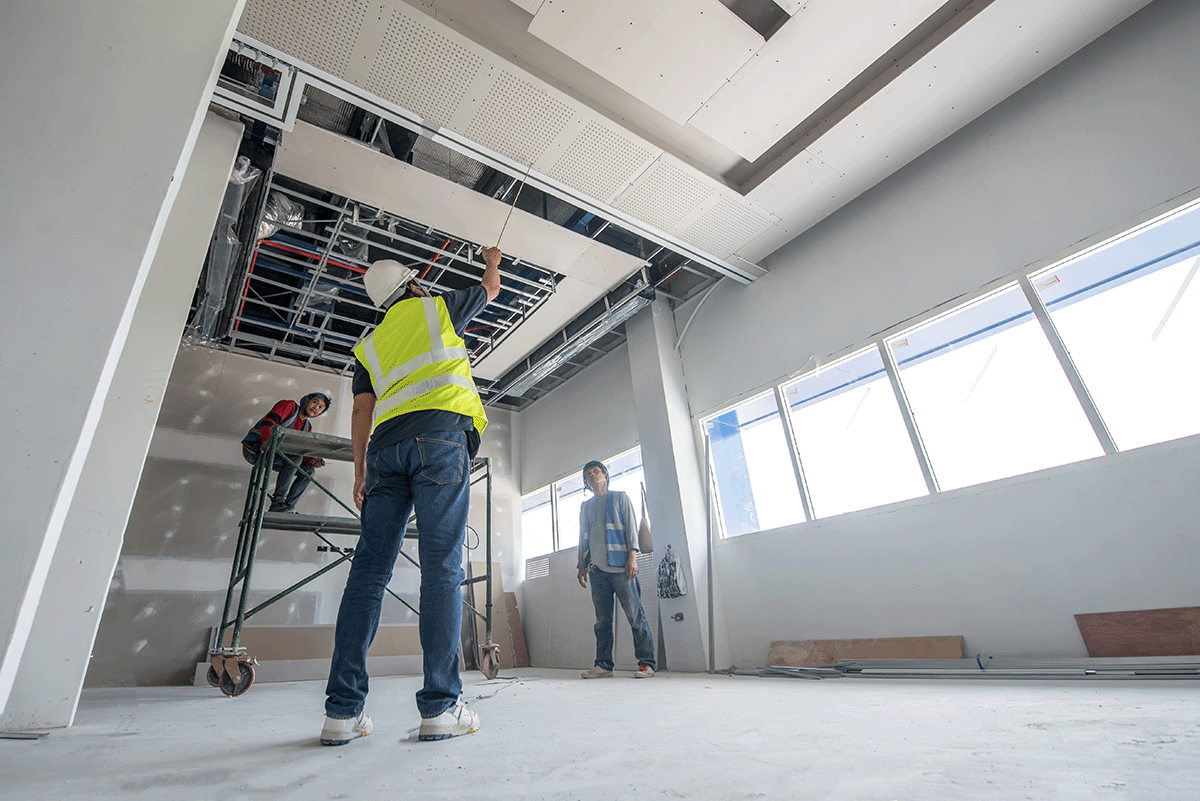Partner with Downstream

Tenant Improvement (TI) projects are essential for customizing commercial or residential spaces to fit the needs of new tenants—whether it’s updating an office floorplan, building out a retail space, or retrofitting a warehouse. But if you’re juggling multiple projects across sites, planning becomes even more critical. A solid Tenant Improvement plan not only sets the tone for success—it prevents costly setbacks, improves communication across teams, and ensures you’re ready for the inevitable “what if” moments. In this guide, we’ll break down why a comprehensive plan is so vital, key components to include, and how Downstream can help keep your project on schedule with flexible equipment rentals.

Tenant Improvement refers to the customized alterations a building owner or tenant makes to rental space as part of a lease agreement. These improvements may include changes to:
TI work is especially common in office buildings, retail centers, medical facilities, and industrial spaces—each with their own timelines, codes, and buildout requirements.
With multiple crews and subcontractors working across different job sites, the last thing you want is uncertainty. A strong plan gives your team:
When expectations are clear from the outset, teams waste less time troubleshooting or waiting on approvals.
Let’s face it—things rarely go 100% according to plan in construction. Material delays, change orders, or inspection hiccups can all throw off your schedule. Your TI plan should include:
Proactive planning for these curveballs is what separates smooth projects from chaotic ones.
TI work typically requires tight coordination between trades. Electrical contractors, drywall crews, painters, and finish carpenters all need time on-site—often in a precise sequence.
Missteps here can lead to rework and missed deadlines. A good plan should include:
These details ensure no one is working over each other or holding up the next trade.

A well-rounded Tenant Improvement plan should do more than outline the tasks—it should serve as a tactical playbook that aligns everyone on your team and reduces risk. Below are the critical components that every strong TI plan should include:
Clearly define what’s being done and what isn’t. A thorough scope of work ensures every stakeholder—from property managers to subcontractors—is on the same page. It should outline all interior buildout details, such as wall configurations, ceiling heights, flooring selections, and finishes. The more specific, the better. This also minimizes change orders and scope creep down the line.
Include a detailed budget that accounts for labor, materials, permits, and rentals—and don’t forget to build in contingency funds (typically 5–15%) for unexpected costs. Even the best-planned projects face surprises like price increases, material substitutions, or design tweaks. Planning for these possibilities ensures financial flexibility and avoids project delays while waiting for budget approvals.
One of the most common causes of TI delays is permitting. Make sure your plan includes timelines for permit submission, expected turnaround from local agencies, and any required inspections along the way. Coordination with the city or county early in the process helps avoid costly rework or schedule slippage.
Break the job into phases and define when each trade will be on-site. This prevents overlap and ensures that work progresses smoothly from demo to final punch list. Consider creating a visual schedule or Gantt chart so your teams can easily track milestones. Be mindful of dependencies—drywall can’t start until rough electrical and plumbing are complete, for example.
Identify what equipment is needed, when, and for how long. If your team will need lifts, material hoists, portable HVAC, or specialized tools, build that into the plan—and don’t forget to arrange for delivery, staging, and removal. Efficient equipment coordination helps avoid idle crews and wasted rental time.
TI projects move fast. Your plan should outline how information is shared, how decisions are made, and who’s responsible for approvals. Establish a communication protocol—whether that’s daily check-ins, shared software, or weekly site walks—to keep everyone aligned. Clear lines of authority can prevent bottlenecks and delays when issues come up.
Renting the right tools and equipment is a key part of a successful TI strategy. Whether you need compact scissor lifts for interior ceiling work or portable power solutions for rough-in stages, having the right machines on-site—on time—is vital.
Failing to plan your equipment needs early can lead to:
At Downstream, we understand how fast-paced and unpredictable TI projects can be. That’s why we offer a smarter, faster way to rent the equipment you need—with built-in tools that help you plan better and respond faster when plans change.
With Downstream, you can:
Whether you’re outfitting 10 retail stores at once or overhauling a multi-floor office, Downstream is built for pros juggling multiple jobsites and timelines.
Explore our platform at trydownstream.com.
Tenant Improvement jobs aren’t just about putting up drywall or laying new floors—they’re about meeting your tenant’s needs, protecting your reputation, and staying profitable across projects.
Without a solid plan, even simple jobs can spiral. But with clear steps, contingency thinking, and the right tools at your disposal, you’re set up to deliver results—on time and on budget.
-min.webp)
Quis nostrud exercitation ullamco laboris nisi ut aliquip ex ea commodo consequat. Duis aute irure dolor in voluptate.
